Experience Analysis
Experience Analysis
The following activities were performed as a part of this process.
The following activities were performed as a part of this process.
Problem solving : The existing mental models derived from secondary research and new mental models for fresh requirement are referred here for problem-solving in this section.
Problem solving : The existing mental models derived from secondary research and new mental models for fresh requirement are referred here for problem-solving in this section.
Solution recommendation : The unique linear flows are identified and listed in detail in this stage.
Solution recommendation : The unique linear flows are identified and listed in detail in this stage.
Experience threading : The whole experience of users is threaded in this stage by referring to all listed unique ideal flows and necessary peripheral flows. While all the flows are collated , they are getting mapped as per-condition flows, ideal flows and post-condition flows to make sure that threading of experience is complete.
Experience threading : The whole experience of users is threaded in this stage by referring to all listed unique ideal flows and necessary peripheral flows. While all the flows are collated , they are getting mapped as per-condition flows, ideal flows and post-condition flows to make sure that threading of experience is complete.
Experience Analysis
This analysis was done to derive the user journey flows that solve all the identified user problems and their root causes
Experience Analysis
This analysis was done to derive the user journey flows that solve all the identified user problems and their root causes
Problem solving
Problem solving
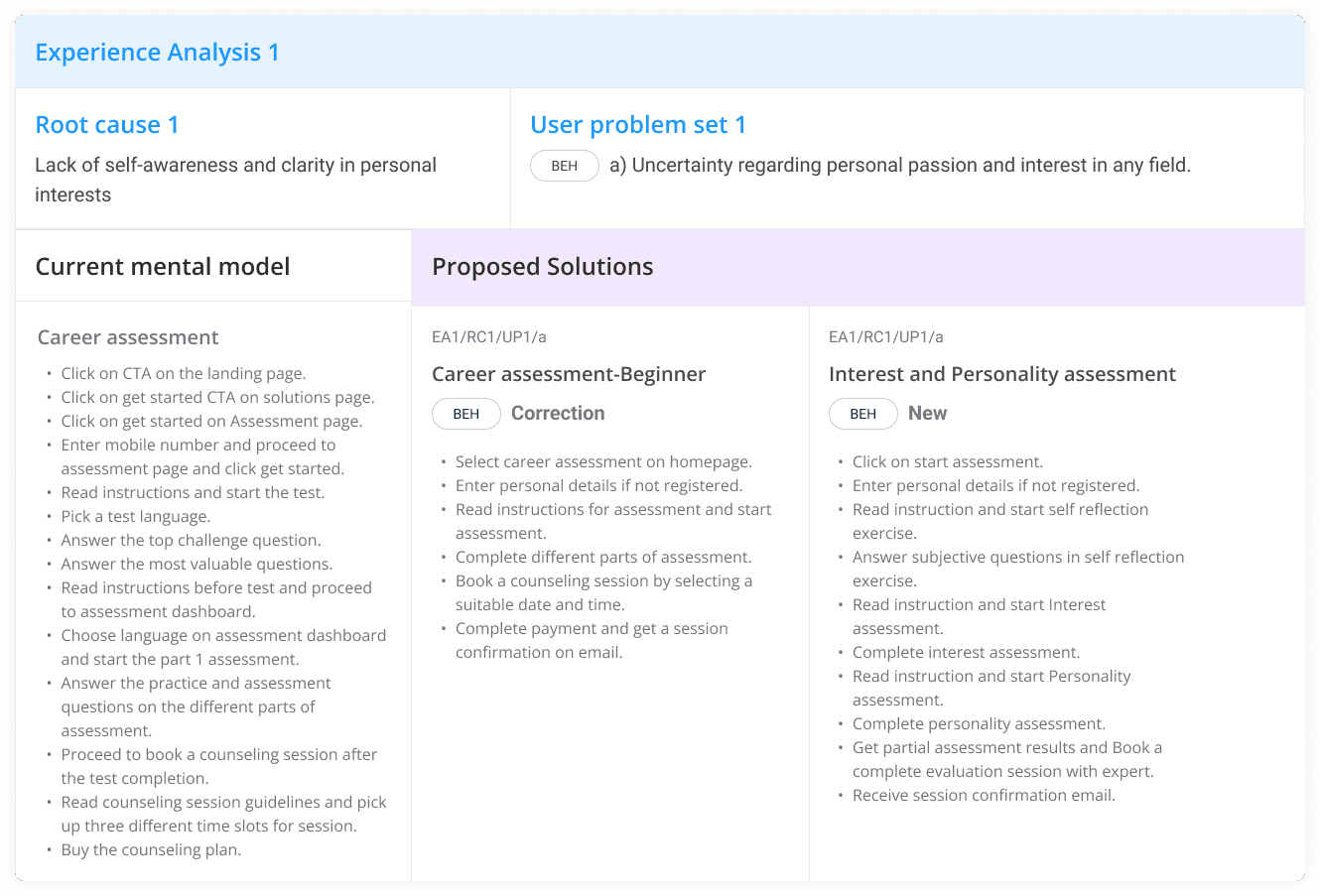

Solution recommendation
Solution recommendation
Unique ideal flows that form the peripheral and problem solving flows of the solution are identified in this stage. This is done to ensure that all possible flows are identified to thread the user journeys at different levels.
Unique ideal flows that form the peripheral and problem solving flows of the solution are identified in this stage. This is done to ensure that all possible flows are identified to thread the user journeys at different levels.
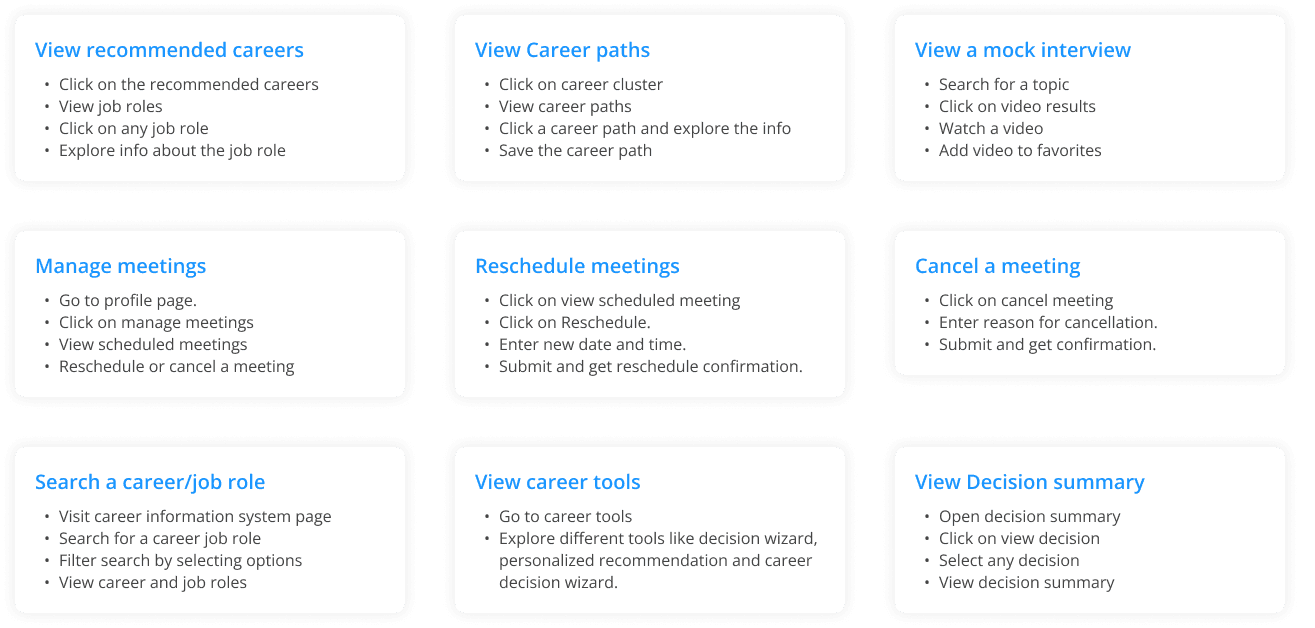

Experience threading
Experience threading
This activity was done to ensure that user journeys for the main problem solving flows are connected correctly to other peripheral flows in the proposed application. Here some of the flows identified in the previous stages are mapped into pre-condition and post-condition flows.
This activity was done to ensure that user journeys for the main problem solving flows are connected correctly to other peripheral flows in the proposed application. Here some of the flows identified in the previous stages are mapped into pre-condition and post-condition flows.
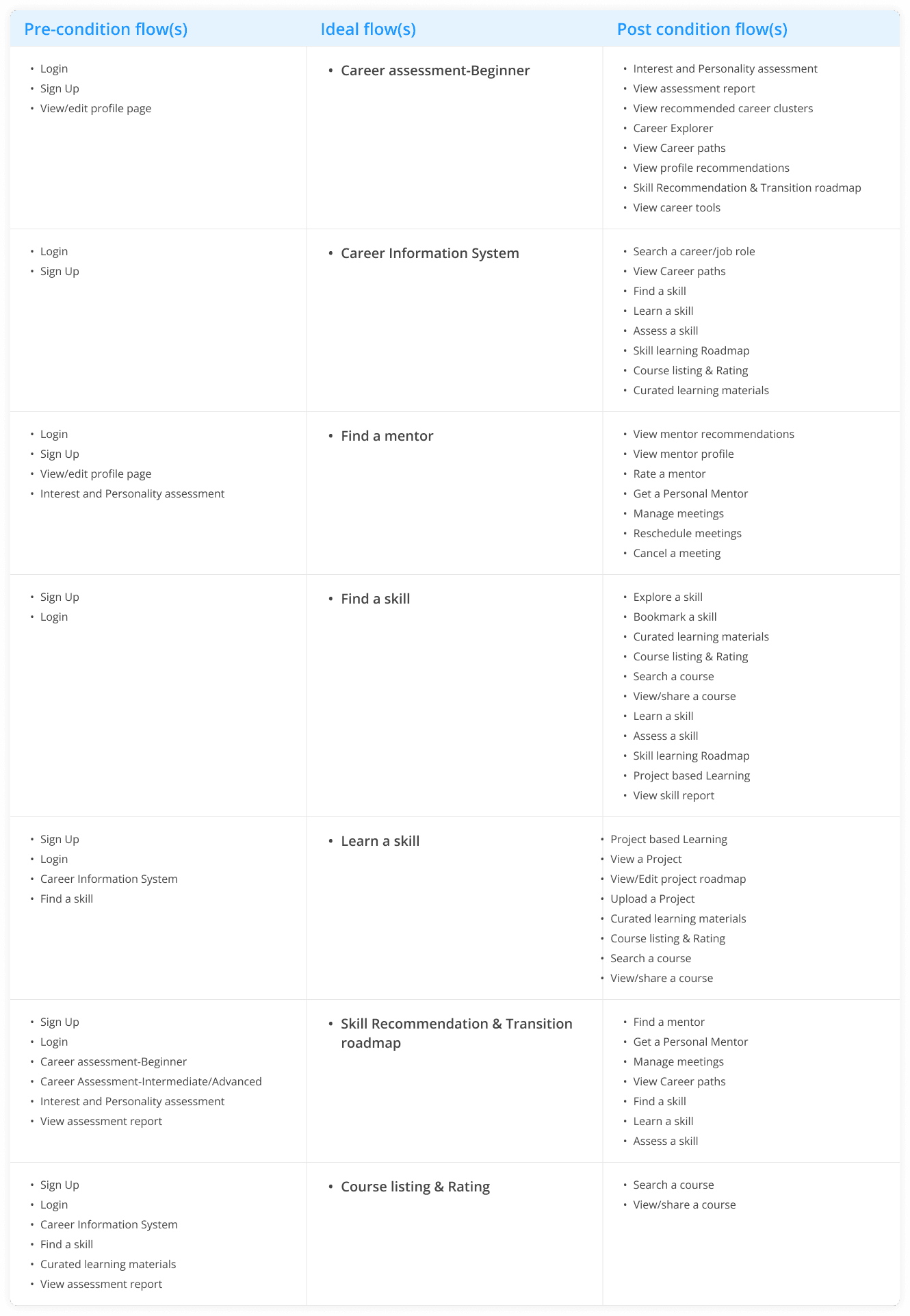

Thematic Analysis
Thematic Analysis
The following activities were performed in thematic analysis.
The following activities were performed in thematic analysis.
Affinity mapping
Affinity mapping
Navigation prototype testing
Navigation prototype testing
Affinity Mapping
The structuring of all ideal flows identified in the experience analysis is carried out first. All label are provided to users to define the modularity and hierarchies with the perspective of users under open ended approach. Classification will ensure how high level modules and main menus are structured. Hierarchies are defined to get the navigation system for the entire experience.
The structuring of all ideal flows identified in the experience analysis is carried out first. All label are provided to users to define the modularity and hierarchies with the perspective of users under open ended approach. Classification will ensure how high level modules and main menus are structured. Hierarchies are defined to get the navigation system for the entire experience.
Thematic Analysis
This analysis helps to identify labels from flows identified in the experience analysis to build modularity and navigation with the user validation and recommendations.
Thematic Analysis
This analysis helps to identify labels from flows identified in the experience analysis to build modularity and navigation with the user validation and recommendations.
First top level labels were identified catering to different business cases.
First top level labels were identified catering to different business cases.


Next, Hierarchies were established for users to navigate through information by providing them with a clear sense fo how the content is organized and how it connects to other content that helps in presenting information in way that is intuitive and easy for the users to navigate.
Next, Hierarchies were established for users to navigate through information by providing them with a clear sense fo how the content is organized and how it connects to other content that helps in presenting information in way that is intuitive and easy for the users to navigate.
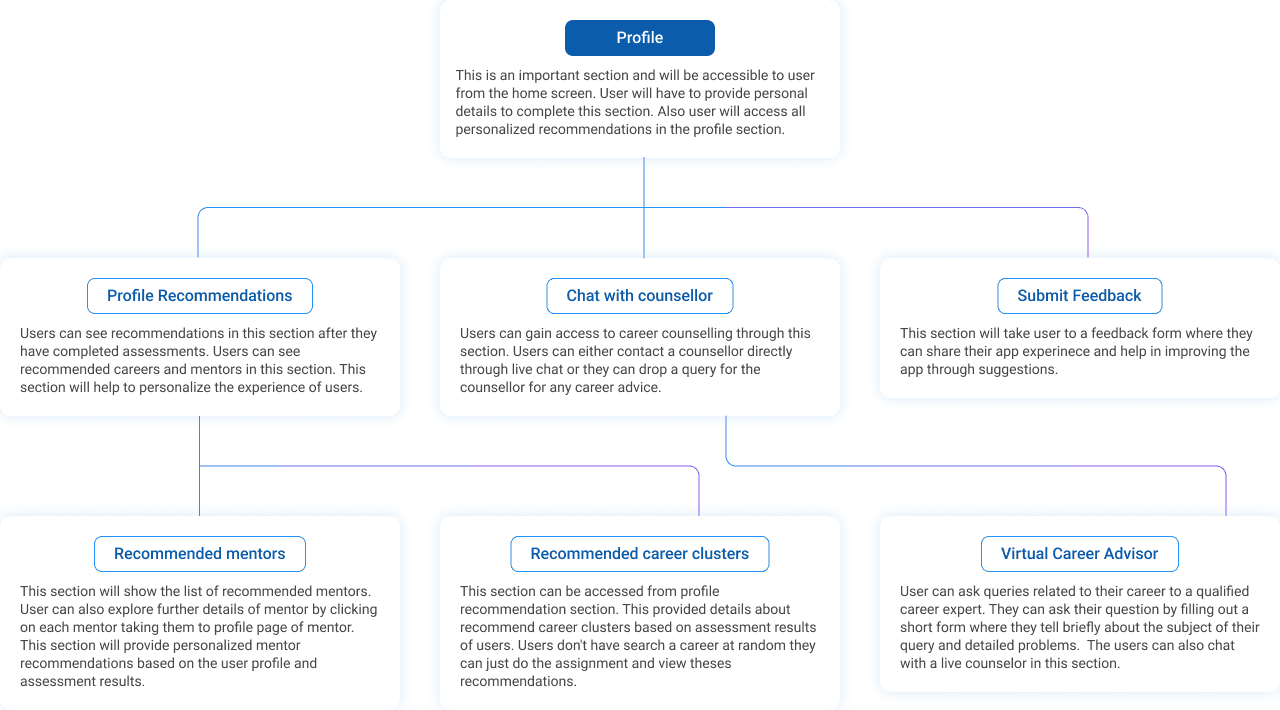

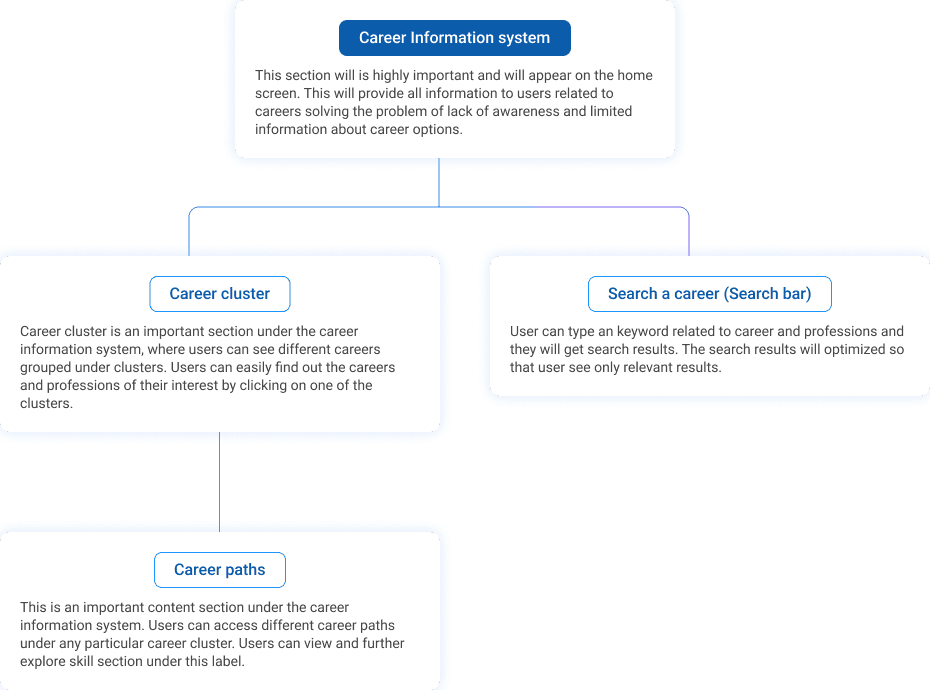

Navigation prototype testing
Navigation prototype testing
A Prototype was prepared in Figma with all the navigation labels. This prototype was shared with the participants on a zoom session where they validated the prototype and provided insights about the possible improvement in the navigation and confusing labels.
A Prototype was prepared in Figma with all the navigation labels. This prototype was shared with the participants on a zoom session where they validated the prototype and provided insights about the possible improvement in the navigation and confusing labels.
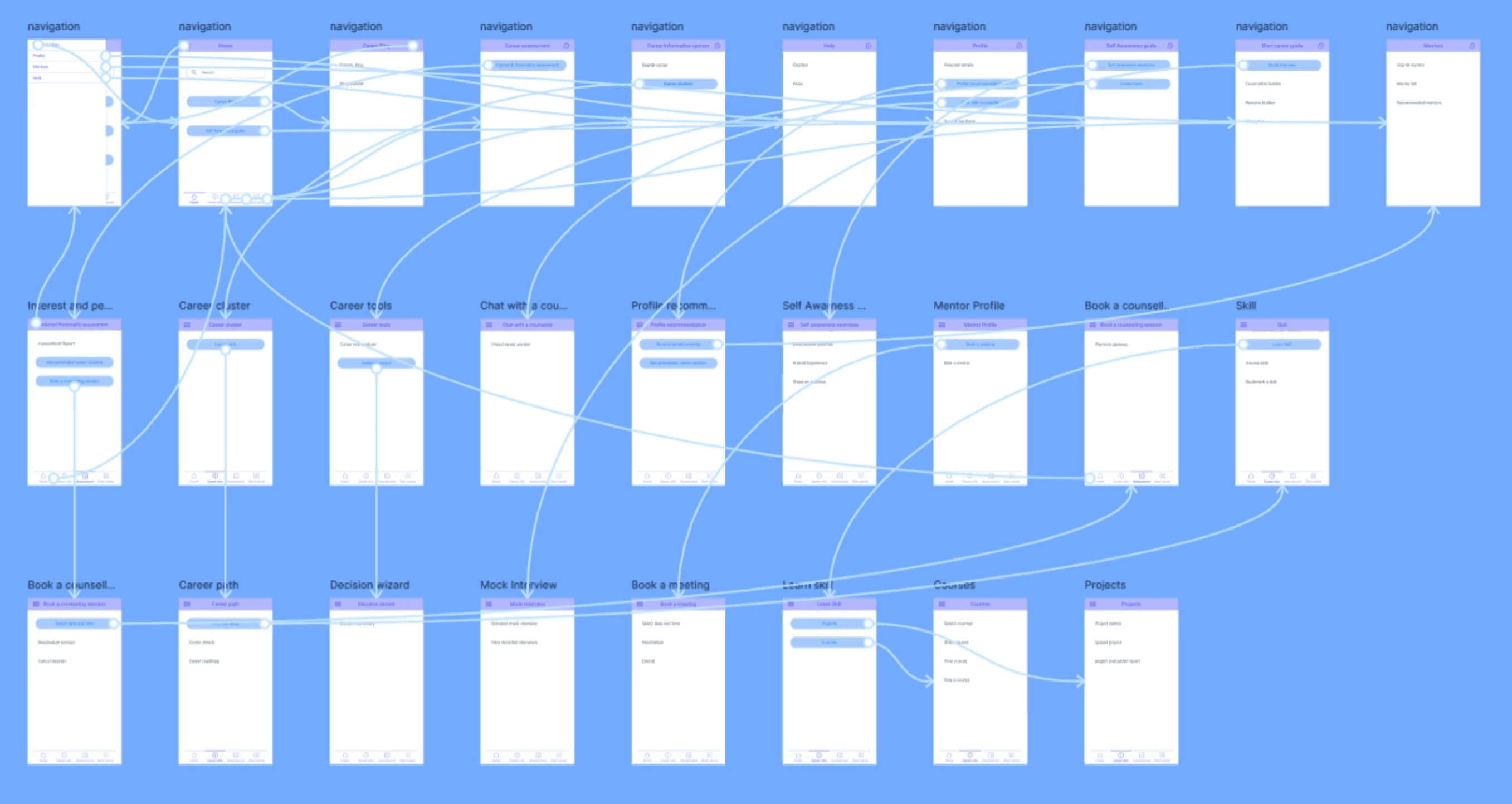

Prototype test data was then tabulated as shown below and analysed further for improving the navigation of the application.
Prototype test data was then tabulated as shown below and analysed further for improving the navigation of the application.


Lets create excellent products!
CONTACT
vikassethi2007@gmail.com
91-96546 65889
SOCIALS
vsdesigns.com
Lets create excellent products!
CONTACT
vikassethi2007@gmail.com
91-96546 65889
SOCIALS
vsdesigns.com
Lets create excellent products!
CONTACT
vikassethi2007@gmail.com
91-96546 65889
SOCIALS
vsdesigns.com